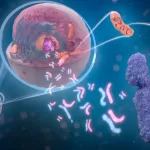
A recent study published in the open-access journal BMJ Oncology reports a staggering 79 percent surge in new cases of cancer among individuals under 50 worldwide during the past three decades (1990-2019). In 2019, breast cancer constituted the highest number of ‘early onset’ cases in this age group. However, cancers affecting the windpipe (nasopharynx) and prostate showed the swiftest rise since 1990. The most detrimental impact on younger adults’ health and mortality in 2019 was from breast, windpipe, lung, bowel, and stomach cancers.
The findings challenge conventional notions regarding the types of cancer typically afflicting those under 50. While cancer traditionally prevails in older populations, evidence indicates a rising trend in cases among those under 50 in many parts of the world since the 1990s. However, most of these studies have focused on regional and national disparities, with only a few examining the issue from a global standpoint or delving into the risk factors for younger adults.
To address these gaps in knowledge, researchers drew on data from the Global Burden of Disease 2019 Study, encompassing 29 types of cancer in 204 countries and regions. They examined incidence (new cases), mortality, health impacts (disability-adjusted life years or DALYs), and contributing risk factors for individuals aged 14 to 49 to estimate annual percentage changes between 1990 and 2019.
In 2019, new cancer diagnoses among individuals under 50 totaled 1.82 million, a 79 percent increase from the 1990 figure. Breast cancer accounted for the largest number of these cases and associated deaths, at 13.7 and 3.5 per 100,000 of the global population, respectively. However, new cases of early-onset windpipe and prostate cancers saw the highest increases between 1990 and 2019, with estimated annual percentage changes of 2.28 percent and 2.23 percent, respectively. In contrast, early-onset liver cancer decreased by an estimated 2.88 percent each year.
In 2019, over 1 million individuals under 50 succumbed to cancer, a nearly 28 percent rise from the 1990 figure. After breast cancer, the cancers with the highest mortality rates and subsequent health decline were those of the windpipe, lung, stomach, and bowel, with the most significant increases in deaths occurring in individuals with kidney or ovarian cancer.
The highest rates of early-onset cancers in 2019 were observed in North America, Australasia, and Western Europe. Nonetheless, low to middle-income countries were also affected, with the highest mortality rates among individuals under 50 found in Oceania, Eastern Europe, and Central Asia. Furthermore, in low to middle-income countries, early-onset cancer had a significantly greater impact on women in terms of both deaths and subsequent health decline.
Based on observed trends over the past three decades, the researchers predict that the global number of new early onset cancer cases and associated deaths will rise by a further 31 percent and 21 percent, respectively, by 2030, with individuals in their 40s facing the highest risk. The researchers suggest that genetic factors likely play a role, but data indicates that diets high in red meat and salt, low in fruits and dairy, along with alcohol consumption and tobacco use, are the primary risk factors for the most common cancers among those under 50. Contributory factors include physical inactivity, excess weight, and high blood sugar.
The researchers acknowledge several limitations to their findings, primarily the varying quality of cancer registry data across different countries, which may have led to underreporting and under-diagnosis. Additionally, it remains unclear to what extent screening and early-life exposure to environmental factors influence the observed trends.
Doctors from the Centre for Public Health, Queen’s University Belfast, in a linked editorial, highlight that the findings challenge preconceptions about the types of cancer diagnosed in younger age groups. They stress the need for a comprehensive understanding of the underlying reasons for these observed trends, which likely involve lifestyle factors. Novel areas of research, such as antibiotic usage, the gut microbiome, outdoor air pollution, and early life exposures, are being explored.
The editorial concludes that prevention and early detection measures are urgently needed, along with the identification of optimal treatment strategies for early-onset cancers. This approach should encompass addressing the unique supportive care needs of younger patients. They emphasize the necessity for global-level partnership, collaboration, and resource allocation to achieve these goals.











